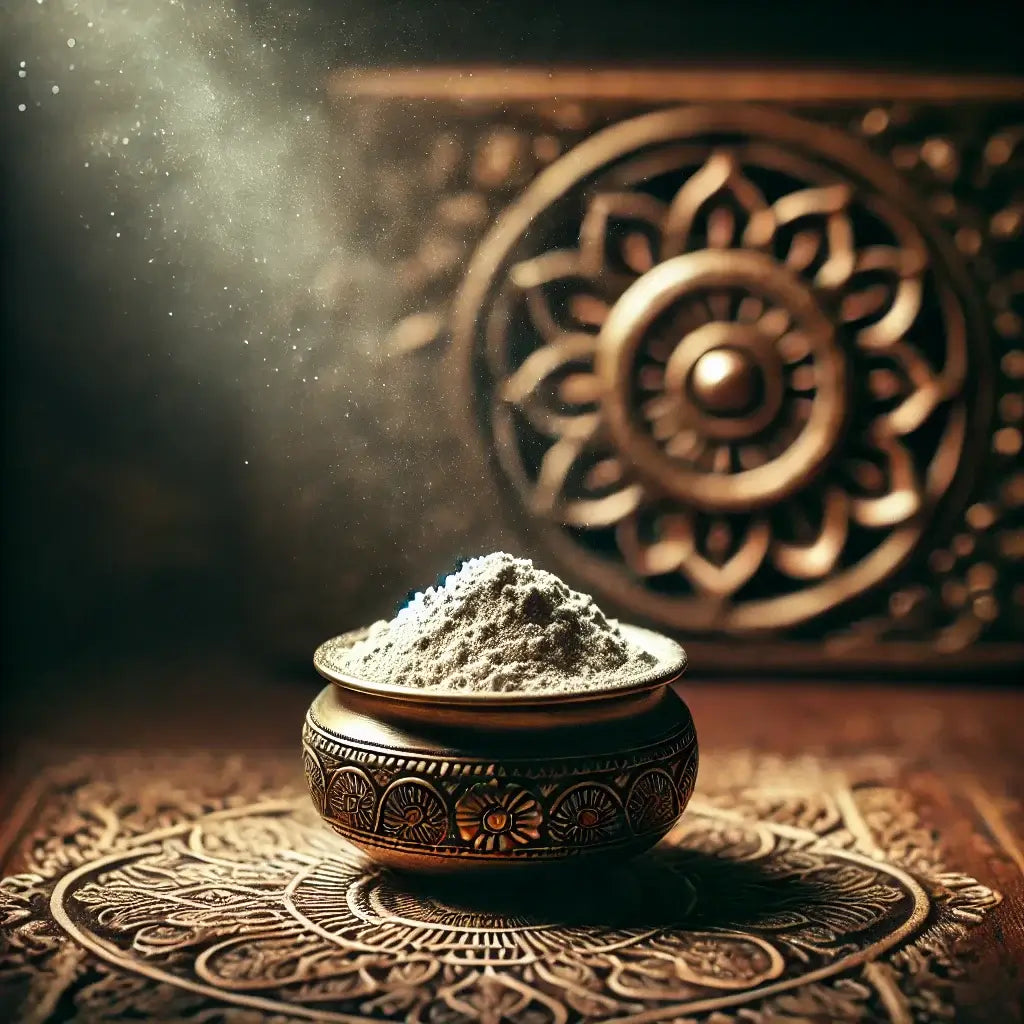圣灰的治疗功效:神话还是现实
圣灰概述
圣灰,又称圣灰,在印度教和其他传统中是一种具有深远精神和文化意义的物质。圣灰主要来自神圣仪式中燃烧的干牛粪或木头,通常涂在额头或洒在身上,作为虔诚、纯洁和臣服于神的象征。在印度文化中,圣灰具有深刻的宗教意义,特别是在对湿婆神的崇拜中,它代表着生命、死亡和重生的循环。除了仪式用途外,圣灰还被认为具有保护和净化作用,使其成为许多精神实践中不可或缺的一部分。
获取优质圣灰
本文的目的
本文旨在深入探讨有关圣灰治疗功效的说法。通过探索丰富多彩的传统信仰,我们旨在了解圣灰在整个历史中如何被视为一种强大的治疗剂。此外,本文将探讨现代解释和从科学角度探讨圣灰的潜在健康益处,旨在区分神话与现实。通过这一探索,读者将全面了解圣灰在精神和身体健康方面的作用。
圣灰的传统信仰
历史用法

几个世纪以来,圣灰一直是印度教文化中备受推崇的物质,在各种古代文献和经文中都有提及。吠陀经是现存最古老的宗教文献之一,其中提到圣灰是供奉湿婆神的仪式中必不可少的元素。它通常被描述为一种神圣的物质,象征着生命的短暂性和死亡的终极现实。从历史上看,圣灰被用于各种宗教仪式,涂在额头上以表示虔诚,并洒在圣物上以净化它们。这种做法仍然是许多印度教徒日常生活中不可或缺的一部分,不断提醒人们灵魂的旅程和精神修养的重要性。
传统疗法中的治疗功效
纵观历史,圣灰具有多种治疗功效。传统信仰认为,圣灰可以治愈一系列身体和精神疾病。据说它可以缓解头痛、发烧和消化问题等常见疾病。在某些实践中,圣灰会与水一起服用或与其他草药混合以增强其治疗效果。人们还经常将圣灰涂抹在伤口、瘀伤或不适部位,认为它具有抗菌和消炎功效。除了物理应用外,圣灰还用于精神实践,人们认为它可以净化气场、抵御负能量并增强冥想和注意力。
象征主义和精神治疗
圣灰不仅仅是一种物质,它在印度教中具有深刻的象征意义。作为纯洁的象征,圣灰代表着过去业力的灰烬,被精神修炼之火烧掉。它通常以三条水平线涂抹在额头上,象征着佩戴者对湿婆神的虔诚,以及他们对精神纯洁和脱离物质欲望的生活的承诺。在精神治疗中,人们相信圣灰具有抵御负能量和保护佩戴者免受伤害的力量。它在仪式和日常实践中的使用有力地提醒人们灵魂的永恒本质以及精神成长对实现解放的重要性。
圣灰的现代诠释
当代用法
在当今世界,圣灰仍然是健康实践的重要组成部分,但它的作用已经演变为适应现代精神和整体生活方式的背景。许多替代医学和整体健康从业者将圣灰纳入他们的日常生活中,认识到它作为自然疗法的潜力。它通常用于冥想练习,人们相信它有助于清理思绪并提高注意力。一些健康中心和精神静修所将圣灰作为治疗课程的一部分,将其涂抹在特定的能量点或脉轮上以促进平衡和健康。在当代精神实践中使用圣灰通常将传统信仰与现代方法相结合,例如能量治疗和正念。
轶事证据

在不同的文化和社区中,有无数个人故事和证词强调了圣灰的治疗功效。来自不同背景的人声称,通过使用圣灰,他们从各种身体疾病中获得了显著缓解,包括慢性疼痛、消化问题和呼吸问题。有些人还报告了深刻的情感和心理益处,例如减轻焦虑、缓解抑郁和获得更大的内心平静感。这些经历常常凸显出圣灰如何成为他们生活中的变革力量,许多人将长期健康改善和精神成长归功于定期使用圣灰。
除了个人轶事外,圣灰还得到了几位著名精神领袖的认可,他们提倡将其作为精神和整体治疗的有力工具。例如,印度最受尊敬的精神人物之一斯里·沙迪亚·赛巴巴 (Sri Sathya Sai Baba)经常谈论圣灰的神奇力量。他经常将圣灰物化为神圣恩典和治疗的象征,与信徒分享,作为一种精神保护和身体健康的手段。赛巴巴关于圣灰的教义强调了它在净化身心、帮助人们克服障碍和实现精神纯洁状态方面的作用。链接至赛巴巴关于圣灰的教义
另一位受人尊敬的精神领袖、Isha 基金会的创始人Sadguru Jaggi Vasudev也讨论了圣灰在各种精神实践中的重要性。在他的教学中,Sadhguru 解释了圣灰涂抹在额头上如何增强人们对更高能量的接受能力,并提醒人们生命的无常。他还提到了在冥想期间使用圣灰的重要性,因为它可以加深冥想体验并促进内心的清晰。链接至 Sadhguru 对圣灰的见解
已故的斯瓦米·希瓦南达·萨拉斯瓦蒂是一位著名的精神导师,也是神圣生命协会的创始人,他也赞扬了圣灰的功效。他认为圣灰是一种神圣的物质,可以净化心灵、抵御负面影响并促进身体健康。斯瓦米·希瓦南达经常建议将圣灰与祈祷、诵经和冥想等精神修行结合使用,强调圣灰能够放大这些修行的好处。链接至斯瓦米·希瓦南达关于圣灰的教义
这些来自精神领袖的认可使得圣灰在现代健康社区中越来越受欢迎。它不仅被日益尊崇为精神奉献的象征,而且被看作是整体治疗的有效工具。随着越来越多的人探索圣灰的潜在益处,它在连接传统精神和当代健康实践方面的作用不断扩大,为实现身体、情感和精神的和谐提供了一条独特的途径。
圣灰的科学观点
Vibhuti 的化学成分
要了解圣灰的潜在治疗特性,必须研究其化学成分。圣灰主要由牛粪或木材燃烧后的灰烬制成,含有各种矿物质和微量元素。常见成分包括碳酸钙、镁、磷和钾,以及少量铁和其他矿物质。这些元素以其潜在的健康益处而闻名,例如支持骨骼健康、帮助肌肉功能和提供抗氧化特性。然而,确切的成分可能因其制备所用材料的来源而异,这可能会影响其治疗特性。
科学研究

尽管圣灰在传统实践中长期使用,但关于它的科学研究相对有限。一些初步研究探索了它的抗菌特性,特别是它在抑制某些细菌和真菌生长方面的有效性。这些研究表明,圣灰的碱性,加上其矿物质含量,可能有助于其所谓的治疗效果。然而,许多证据仍是轶事,需要进一步研究来证实这些说法。科学界尚未充分探索圣灰的潜在健康益处,目前的研究往往强调需要进行更严格的临床试验来证实其功效。
怀疑与批评
虽然圣灰在许多精神和传统习俗中受到尊崇,但也有怀疑者。批评者认为,圣灰的治疗功效主要基于文化信仰,缺乏实质性的科学依据。安慰剂效应通常被认为是圣灰益处的可能解释,人们之所以能体验到积极的结果,是因为他们坚信圣灰的功效,而不是灰烬本身的固有属性。此外,圣灰的成分因制作方式不同而变化,这引发了人们对其一致性和有效性的质疑。因此,科学界许多人主张谨慎使用圣灰作为治疗手段,强调需要基于证据的验证。
神话还是现实:分析证据
权衡传统观念与科学证据
长期以来,传统信仰一直认为圣灰具有治疗功效,这些传统信仰深深植根于文化和宗教习俗中。这些信仰认为圣灰可以治愈疾病、抵御负能量并增强精神健康。然而,在科学分析的严格审查下,支持这些说法的证据并不那么有力。虽然初步研究暗示了一些潜在的治疗益处,例如抗菌特性,但研究仍处于早期阶段,缺乏全面的同行评审验证。传统信仰与科学发现之间的对比揭示了巨大的差距;前者是由几个世纪的文化意义驱动的,而后者则需要通过严格的测试和可重复性进行实证证明。
文化理解与经验理解
文化观念在塑造人们对圣灰治疗功效的信仰方面发挥着重要作用。对许多人来说,圣灰不仅仅是一种物质,更是神灵干预和精神力量的象征。这种文化理解通常通过仪式、故事和精神领袖的认可得到强化,从而形成了一种代代相传的强大信仰体系。然而,从经验的角度来看,圣灰作为治疗剂的功效仍未得到证实。经验证据对于验证传统说法至关重要,因为它为理解某种东西如何以及为什么起作用提供了科学基础。如果没有这样的证据,对圣灰治疗功效的信仰在很大程度上仍停留在信仰和传统领域,而不是经过证实的科学。
在分析证据时,很明显,文化和实证两种观点都带来了宝贵的见解。传统信仰提供了丰富的历史和背景,而科学探究则试图揭示潜在的机制并验证这些说法。为了让 Vibhuti 在现代健康实践中得到充分理解和接受,必须采取一种平衡的方法,既尊重文化意义,又寻求实证验证。这种双重理解使我们能够更全面地了解 Vibhuti,承认其在精神传统和科学真理追求中的地位。
结论
要点总结
在对圣灰的探索过程中,我们深入研究了其治疗功效的传统和现代观点。传统信仰深深植根于文化和宗教习俗中,认为圣灰是一种能够治愈疾病、抵御负能量和增强精神健康的强大物质。这些信仰得到了数百年的使用和精神领袖的认可。另一方面,现代诠释已将圣灰融入当代健康实践中,尽管其更注重象征性和精神性,而不是经验验证。关于圣灰的科学观点仍在发展中,初步研究表明其具有潜在的治疗功效,但缺乏证实传统主张所需的全面证据。
最后的想法
圣灰的治疗功效究竟是神话还是现实,这个问题复杂且涉及多个方面。一方面,传统信仰和文化意义不容忽视;它们提供了圣灰使用及其已知益处的丰富历史。另一方面,缺乏严谨的科学证据意味着这些说法在经验意义上仍未得到证实。一个平衡的结论是承认圣灰的深远文化和精神重要性,同时也认识到需要进一步进行科学研究来验证其治疗功效。鼓励以开放的心态探索传统做法,并采用科学方法,有助于弥合信仰与证据之间的差距,从而更全面地了解圣灰。
其他资源
建议阅读
- 斯瓦米·希瓦南达·萨拉斯瓦蒂 (Swami Sivananda Saraswati) 著《用圣灰治愈:圣灰之旅》
- 拉维·香卡博士的《精神物质的科学:圣灰的分析》
- 有关传统治疗方法和圣灰在精神仪式中的作用的文章和研究。
相关产品
- 探索 Sacred Plant Co 的Vibhuti Bhasma 。





